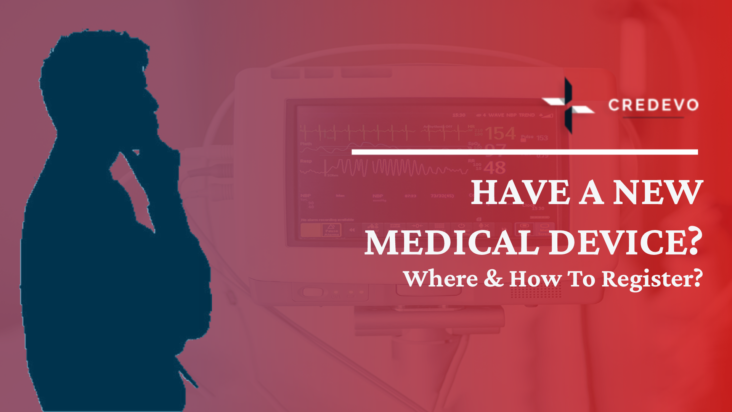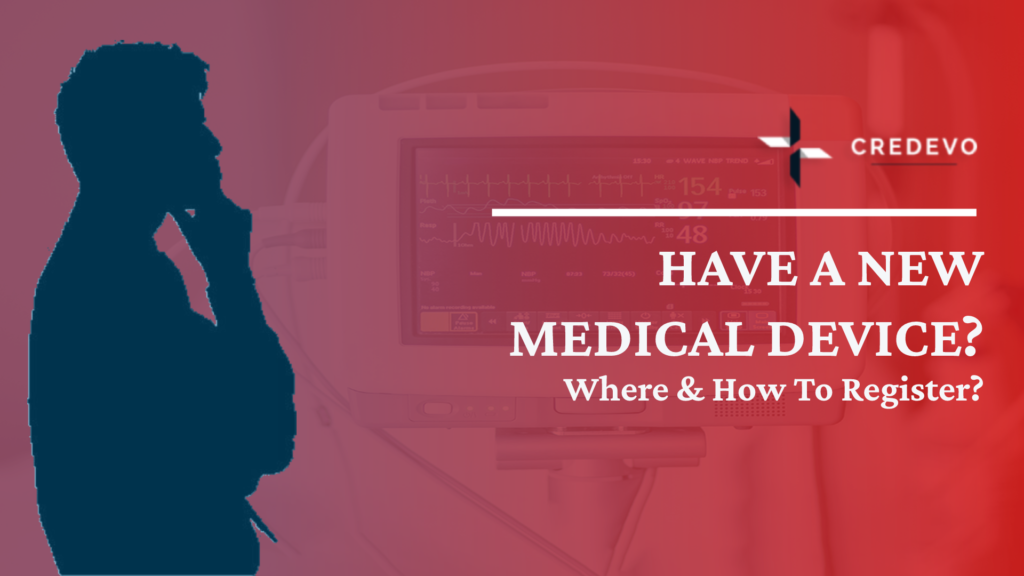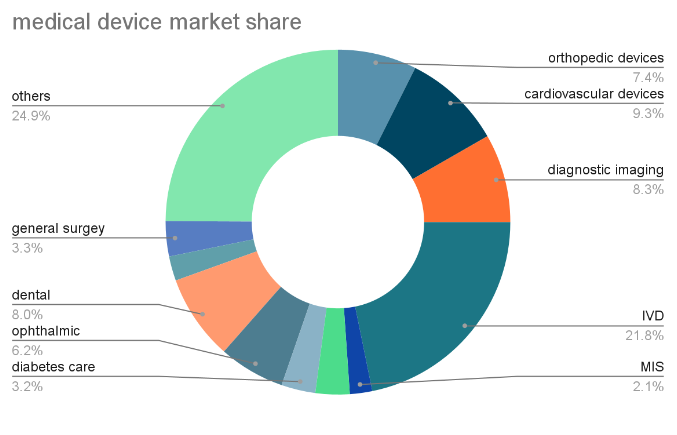Have A New Medical Device? Where & How To Register?

The medical device market has grown significantly in recent years. Recent estimates suggest that the global market for medical devices will reach $612.7 billion by 2025. However, competition is fierce, and medical device companies of all sizes have questions about where and how to register their device.
The information in this article was last updated in March 2023.

So, let’s see where and how to market your brand-new medical device.
Having a clear marketing strategy and a deep understanding of the market is essential to attract customers, boost sales, and build a successful business. However, registering a product can be a complex process that varies depending on the country you choose. Each country has its own unique set of rules and regulations
Market conditions, approval processes, timelines, considerations, requirements, and regulations may vary depending on the country where you plan to market your medical device.
Before entering into details, let’s understand different types of medical devices.
What are the different types of medical devices
Active medical device:
Any medical device that depends on electricity or any form of energy other than that produced directly by the human body or gravity is an active medical device.
An implantable active medical device
Any active medical device we insert surgically or medically, entirely or partially into the human body or through a natural orifice to remain there after the procedure.
In vitro diagnostic medical devices (IVD devices)
Any medical device that is a reagent, reagent product, calibrator, control material, kit, instrument, apparatus, equipment, or system, whether used alone or in combination and intended by the manufacturer to be used in vitro for the examination of specimens, including blood and tissue donations, derived from the human body, with the sole or primary goal of providing information regarding.
- A physiological or pathological condition.
- A congenital deficiency.
- To assess the suitability and safety of potential recipients.
- To track treatment interventions.
Now, if you have a new medical device, you will have basic questions like
- Which country would be the best for registering and marketing your medical device?
- What are the regulatory requirements that apply to your medical device in different countries?
- What are the regulatory requirements?
Step 1: Understanding the Global Market
In 2021, the estimated market for medical equipment was USD 488.98 billion. By 2029, the researchers expect the market to grow from USD 495.46 billion in 2022 to USD 718.92 billion, registering a CAGR of 5.5 percent.

Below table show figures of the current market and market estimates for 2025 by various reports.
| # | Country | Current market | Estimated market growth | CAGR |
|---|---|---|---|---|
| 1 | Australia | 4.78 bn(2022) | 6.21 bn (2025) | 10% |
| 2 | Europe | 48.9 bn(2020) | 61.4 bn (2025) | 4.7% |
| 3 | Japan | 4.5 bn(2018) | 6.27 bn(2025) | 4.6% |
| 4 | USA | 176.7 bn(2020) | 221.4 bn(2025) | 5% |
| 5 | Singapore | 2.11 bn(2020) | 3.45 bn (2025) | 8.4% |
| 6 | Malaysia | 2.00 bn (2022) | 2.45 bn (2025) | 7.5% |
| 7 | Myanmar | 456 M(2017) | 711.36 M(2025) | 7% |
Step 2: Understanding the global regulations
A system of laws known as Medical Device Regulation (MDR) controls
- The development
- Manufacturing
- Distribution of medical devices.
Medical device manufacturers who want to sell their products on the market must accept this law. Under medical device legislation, manufacturers should disclose more accurate clinical data to support their performance and safety. The purpose of establishing these regulations is to assure patients and caregivers with confidence that the tool they are using is safe and efficient. And helping patients is the ultimate goal of medical device development. If your equipment is unsafe, you run the risk of hurting patients.
Understanding the regulatory standards for medical devices is mandatory before you market your medical device. There are several regulatory standards, and different countries may require different standards.
Let’s look at a few regulatory standards for medical devices available globally.
CE Marking
You need to obtain CE Marking for your product to sell medical equipment. The CE Marking certifies your medical device’s compliance with all relevant EU regulations and permits the sale of your goods. Whether you outsource some or all of your manufacturing operations, as a manufacturer, it is your responsibility to maintain regulatory compliance and obtain CE marking for your product.
Interestingly most countries accept CE marking. These include Europe, Singapore, Malaysia, Myanmar, Australia, Japan, and the USA.
ISO
ISO is a regulatory standard for organizations engaged in the design, production, installation, and maintenance of medical devices. Additionally, it can be utilized by internal and external parties, including certification organizations, to support their auditing procedures.
The countries that accept ISO include Australia, Europe, Japan, the USA, Singapore, Malaysia, and Myanmar.
QMS
An organized set of protocols and processes known as a medical device quality management system (QMS) addresses all facets of design, production, supplier management, risk management, complaint handling, clinical data, storage, distribution, product labeling, and more.
Australia, Europe, Japan, the USA, Singapore, Malaysia, and Myanmar follow the QMS systems.
Let’s look further into details about the most familiar ISO globally.
MDSAP Certification
The MDSAP stands for “Medical Device Single Audit Program,” which is a certification program that allows medical device manufacturers to undergo a single regulatory audit that satisfies the requirements of multiple regulatory authorities. MDSAP certification is recognized by the regulatory authorities of several countries, including the United States, Canada, Australia, Brazil, and Japan.
Under the MDSAP program, a single audit is conducted by an accredited third-party auditor, which assesses the manufacturer’s quality management system (QMS) against the regulatory requirements of each participating country. The participating regulatory authorities share the results of the audit, which helps to avoid duplicate audits and reduce the regulatory burden on manufacturers.
The MDSAP certification is required by some regulatory authorities, such as Health Canada, for medical device manufacturers who want to sell their products in their respective countries. MDSAP certification is not a replacement for regulatory approval or clearance, but rather an assessment of a manufacturer’s QMS against regulatory requirements.
ISO
The International Organization for Standardization is an international standard development organization composed of representatives from the national standards organizations of member countries.
The most popular ISO reference standards that device makers should follow.
| Reference standard | Standard for? | Most current version |
|---|---|---|
| ISO 13485 | The standard for medical device management systems. | ISO 13485:2016 |
| ISO 14971 | The Standard for risk management of medical devices | ISO 14971:2019 |
| ISO 9001 | The standard for company quality management system | ISO 9001:2015 |
| ISO 62304 | The standard for software used in medical devices | ISO 62304:2006. |
| ISO 11135 | The standard for ethylene oxide sterilization of medical devices. | ISO 11135:2014 |
| ISO 11137 | The standard for sterilization of medical devices using radiation. | |
| ISO 11607 | The standard for sterilized product packaging for medical devices. | |
| IEC 60601 | The standard for safety and essential performance of medical electrical equipment. |
T Mark & R Mark
T Mark
According to the Japanese Telecommunications Business Law, while using terminal equipment across a telecommunications carrier network, a device that uses an Ethernet terminal connection must pass the telecommunications carrier’s connectivity test and demonstrate compliance with standards. Your device will have a T-Mark and be able to connect to networks when the device is approved.
R Mark
This is Japan’s radio law that applies to all products using the 3 THz radio band. This can sometimes apply to items like discharge lamps and induction heating units that aren’t radio communications devices.
The T Mark & the R Mark are only applicable in Japan.
Step 3: Classify your medical device
Different regions classify medical devices differently according to the potential risk. Australia, Europe, Japan, and the USA follow the class I to class IV scheme. Singapore, Malaysia, and Myanmar follow the A-D scheme. Below mentioned tables show a general classification that may provide a brief idea regarding the potential risk and examples for each category.
Classification of medical devices in Australia, Europe, Japan, and the USA
| Class | Risk | Examples |
| Class I | Low | Surgical retractors, tongue depress depressors |
| Supplied sterile (Class I)Incorp. a measuring function) (Class I)Class IIa | Low-medium | Hypodermic needles, suction unit medicine cup with specific units of measurementDigital or infrared thermometers |
| Class III | High | Heart valves, Knee replacement implants, devices containing medicines or tissues, cells or substances of animal, biological, or microbiological origin |
| class IV -AIMD(Active Implantable Medical Devices | High | Implantable defibrillator |
Classification of medical devices in Singapore, Malaysia, and Myanmar
| Class | Risk | Examples |
| A | low-risk | Wheelchairs or tongue depressors |
| B | Low to moderate | Hypodermic needles or suction equipment |
| C | Moderate to high-risk | Ventilators or bone fixation plates |
| D | High-risk | Implantable defibrillators or heart valves |
**Note: These classifications are just for informative purposes and are not standard for all countries. To clarify to which class your medical device belongs, contact us at [email protected] or complete the form below with brief product details.
Step 4: Understand the regulatory requirements
The fundamental requirements for medical device marketing vary depending on the country. Most generic requirements management principles are a good place for medical device makers to start.
Practically any industry can benefit from basic guidelines for needs planning, defining, prioritizing, etc. Medical device regulations must concern several essential components that other businesses might not require. The creation of medical devices must take compliance, risk management, and traceability into account.
| Country | General requirements |
|---|---|
| Australia | Pre-market assessment, conformity assessment-Before requesting an inclusion on the Australian Register for Therapeutic Goods, the manufacturer must demonstrate compliance with the Essential Principles (EP) (ARTG). Having a CE marking Inclusion in the ARTG, fill out a device application based on the medical device’s category and pay any associated TGA fees. Post-market assessment. |
| Europe | Define product classification and intended use, Conformity to essential requirements and a quality management system (QMS), Procedure for conformity assessment. Documentation Relating to the DOSSIER. Report of Clinical Evaluation (CER). |
| Japan | Pre-market approval (PMA), Follow the regulations of the Pharmaceuticals and Medical Devices Agency (PMDA) which collaborates with MHLW. Having CE marking, T mark, and R mark, Conformity to essential requirements, and a quality management system (QMS) |
| USA | Premarket Approval (PMA) Investigational Device Exemption (IDE) for clinical research, Establishment Registration, Medical Device Listing, Premarket Notification 510(k), Quality System (QS) Regulation, Labeling Requirements, Medical Device Reporting (MDR) |
| Singapore | HSA’s Class A Medical Device Register for local makers or local importers. Singapore Registrant to handle the organization of and submission of your device registration application to the HSA. CE marking, ISO marking, Conformity to essential requirements, and a Quality Management System (QMS). |
| Malaysia | Create a condensed version of your technical file that includes the certification from your reference nation, test results, a description of Malaysia’s Essential Principles, a Malaysian Declaration of Conformity, a QMS Certificate, etc. CAB verification Certificate following a successful audit, Review of MDA and their application response CE marking, ISO marking |
Conclusion
The market for medical products is growing day by day. The secret to success is choosing a good marketplace with a better understanding of the process.
Each country has its own rules for the medical device registration process. The steps of the registration process, rules, regulations, and the classification of medical products may vary depending on the country you choose.
Do you have any questions regarding the global registration of your medical device? Or are you in need of regulatory support for registering your device in a specific country?
Credevo offers comprehensive market and regulatory guidance for your medical device. Please provide the necessary details below to get in touch with us and learn more about our expert services.